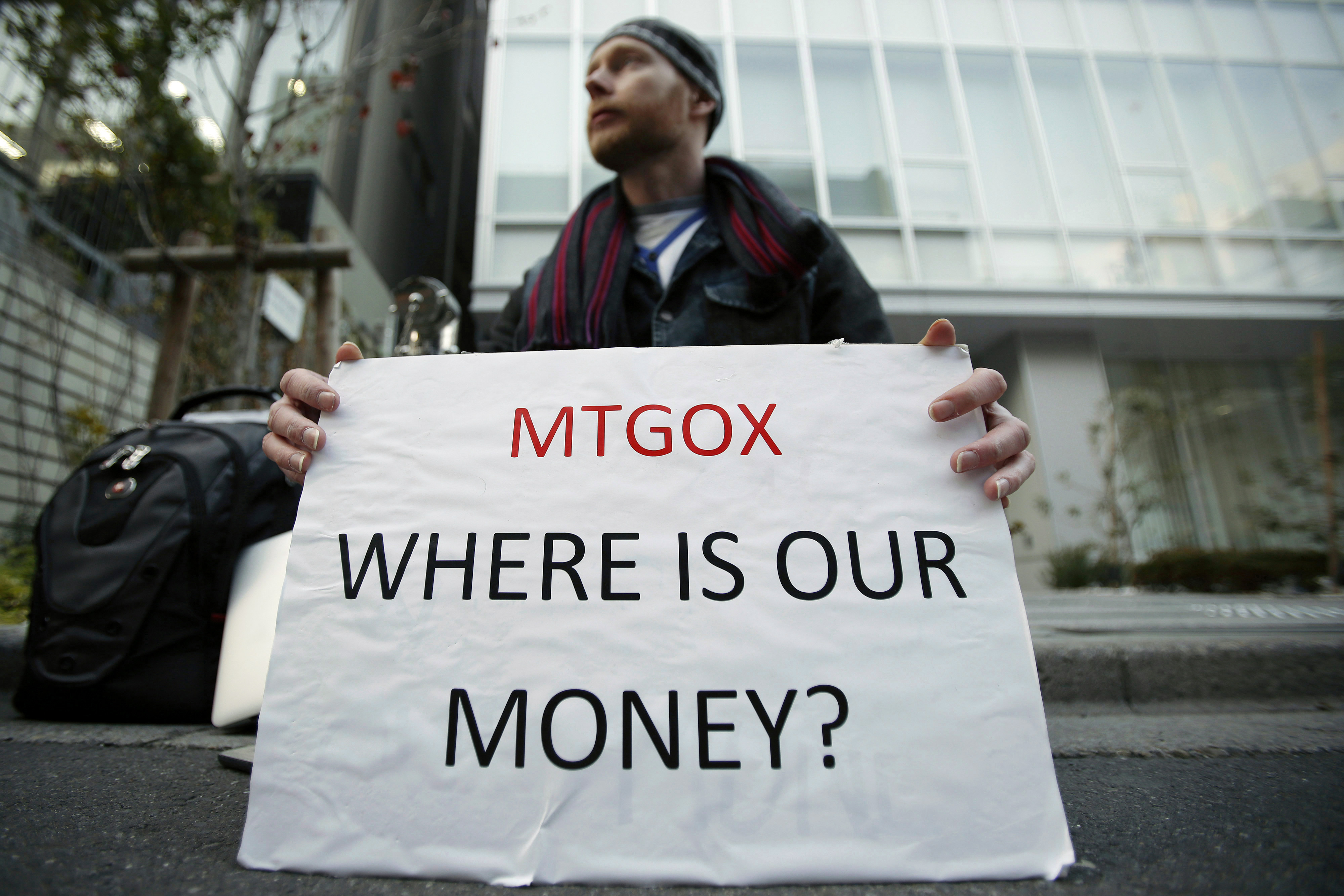Part 5: ICO Booms, Ethereum Hacks & Doge Rebellion
By this point, Bitcoin had already proven it wasn’t a joke anymore.
But in 2014, one of the biggest disasters in crypto history was about to unfold — and it changed everything.
💥 Mt. Gox — The First Major Collapse
Mt. Gox started as a site to trade Magic: The Gathering cards (yep, really), then somehow became the world’s biggest Bitcoin exchange by 2013.
At its peak, it handled over 70% of all Bitcoin transactions.
Then… it imploded.
🔥 February 2014: The Meltdown
- Users suddenly couldn’t withdraw BTC
- Rumors started flying
- And then: 850,000 BTC vanished
That was $450 million+ at the time. Today? Not dare to think.
The story?
Hackers exploited Mt. Gox’s weak security and drained funds over time.
Some think it was poor management. Others believe it was an inside job.
Either way, it tanked trust in centralized exchanges.
Bitcoin’s price dropped by over 50% overnight. Brutal.
🧠 But It Didn’t Die
Most tech projects would’ve collapsed.
But Bitcoin? It didn’t.
The Mt. Gox disaster became a lesson. People started realizing:
“If we’re gonna go decentralized… maybe we shouldn’t rely on a central exchange to begin with.”
The crypto community became tougher, more cautious, and… more creative.
And while all that was happening — someone else was cooking up something wild.
⚡ Meanwhile… A Teenager Was Building a New Kind of Blockchain
Vitalik Buterin, a young Russian-Canadian who had been writing for Bitcoin Magazine, was watching all this unfold.
He thought Bitcoin was cool — but limited.
“It can store value, but it can’t do much else.”
Vitalik had an idea:
What if blockchain wasn’t just money…
but a programmable platform?
A place to build apps, not just send coins.
He started writing the whitepaper for something new: Ethereum.
🧠 Ethereum: A World Computer
The idea was simple — but kind of radical:
- Let developers write smart contracts: self-executing code on a blockchain
- Let people build dApps (decentralized apps)
- Let communities form DAOs (decentralized autonomous orgs)
- Let anyone launch their own token — no permission needed
Basically:
Bitcoin = digital gold
Ethereum = programmable world
🏗 Ethereum Launches in 2015
Vitalik and a team of developers ran a public crowdfunding campaign in 2014.
People could send BTC to receive ETH in return.
In 2015, Ethereum went live.
The price of ETH at launch? Around $0.75.
Today? Well… that aged well.
Ethereum changed the game — and laid the foundation for:
- NFTs
- DeFi
- Web3
- Token economies
- And more weird experiments than anyone expected
🧙 Vitalik: Not Your Usual Crypto Bro
Vitalik didn’t look like a CEO.
He was skinny, quiet, into Warcraft, wore unicorn shirts, and just… didn’t fit the billionaire tech founder stereotype.
But he was laser-focused.
His mission?
Make Ethereum the foundation for decentralized everything.
He wasn’t just building tech — he was reshaping how people think about systems, ownership, and trust.
🪐 Recap Time
Let’s pause and look at what just happened in the crypto world:
- ✅ Bitcoin faced its first true disaster with Mt. Gox
- ✅ The crypto scene learned some painful lessons
- ✅ Vitalik launched Ethereum, taking blockchain beyond money
- ✅ A new era began: programmable value, open finance, and dApps
And all this?
Still just the beginning.
⏭ Coming Up Next (Part 5…)
- The 2017 ICO craze (aka: how everything got weird)
- $100M hacks, forks, and flame wars
- DeFi going wild
- NFTs going mainstream
- And crypto finally entering public consciousness
The next stage? It’s messier, louder, and full of hype — but it’s where crypto turns into culture.

